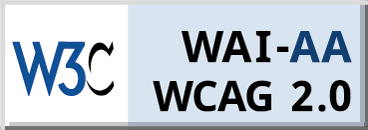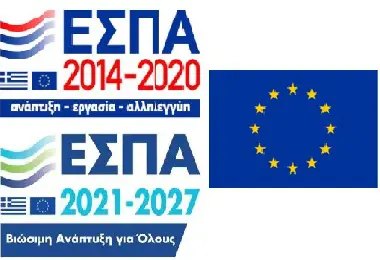Background
On June 14, 1985, in the little town of Schengen in Luxembourg, five (5) countries, namely Belgium, Germany, France, Luxembourg, and Holland signed an agreement aiming at “{….} the free crossing of internal borders by the Member-States’ nationals {….}“ and “the free movement of goods and services”.
The relevant Schengen Convention implementing the Schengen Agreement was signed in 1990 and came into effect in 1995. In conformity with it, the gradual abolition of checks at the participating States’ internal borders was materialized while common external borders were created; at the same time, entry checks for entering the Schengen area have started, on the basis of the same procedures and common rules.
Greece signed the Agreement in 1992. In 1997, the Hellenic Parliament ratified both the Agreement and the Schengen Convention implementing the Schengen Agreement, as per Law 2514/26-06-1997. In 2000, internal borders checks were abolished with regard to the borders of Greece.
Member – States
The Schengen area almost coincides with the European Union area comprising the Union’s Member-States with the exception of some of them, and certain third countries as well. European Union countries which are not Schengen Convention full members are: Ireland, Cyprus, while the third countries, non-European Union members,that belong to the Schengen area, are: Iceland, Norway, Switzerland, and Lichtenstein.
Freedom & Security in the Schengen area
One of the conditions related to the implementation of the Agreement stipulated that internal borders abolition would not endanger the security of Member- States and of their nationals. The ruling concept of the Schengen Agreement is that freedom and security should be as closely linked as possible.
The main rules that were adopted in the context of the Schengen Agreement, include:
- Abolition of checks at internal borders
- Common applicable rules to persons crossing the external borders of European Union Member-States
- Harmonization of the rules regarding entry and visa conditions for a short-term stay
- Strengthening of police cooperation by establishing the S.I.Re.N.E. Services in each Member-State
- enhancement of judicial cooperation
- establishment and development of the Schengen Information System (SIS)
The Schengen Information System (SIS)
https://home-affairs.ec.europa.eu/policies/schengen-borders-and-visa/schengen-information-system_en
The Schengen Information System (SIS) constitutes an essential tool for the application of the provisions of the Schengen acquisas integrated into the framework of the European Union. SIS is one of the major compensatory measures contributing to maintaining a high level of security within the area of freedom, security and justice of the Union by supporting operational cooperation between national competent authorities. it is the largest internal security and border management information system in the Union. It provides information on wanted or missing persons, third-country nationals without a right to legal residence in the Union and lost or stolen items (eg vehicles, firearms, watercraft and identity documents).
At a national level, the 3d Section of Technical Support N.S.I.S. / Information Technology Division/Hellenic Police Headquarters is entrusted with the responsibility for the smooth running of S.I.S.
The SISI has been in operation since March the 26th, 1995, on the day when the checks at the internal borders of the States participating in the Schengen cooperation were abolished.On 2006, it was decided the development of a new system with more advanced functions and based on state-of-the-art technologies. Thus with the Regulation (EC) 1987/2006, of the European Parliament and the Council’s of December the 20th, 2006, and with the Council’s Decision 2007/533/JHA of June the 12th, 2007, the provisions related to the establishment, operation, and use of the SIS II were adopted, and on April the 9th, 2013, took place the transition of the entire Schengen area from SIS I to the SIS II.
Given the progress made in the meantime in the field of information technologies, it was deemed necessary to Recast the Schengen Information System (SIS – Recast ) with more advanced functions and based on state-of-the-art technologies. So in replacement of Regulation (EC) no. 1987/2006 of the European Parliament and of the Council of December 20, 2006 and Decision 2007/533/JHA of the Council of June 12, 2007, the following 3 new Regulations were established:
- Regulation (EU) 2018/1860 of the European Parliament and of the Council of 28 November 2018, for the Return of illegally staying third-country nationals
- Regulation (EU) 2018/1861of the European Parliament and of the Council of 28 November 2018 in the field ofBorder checks
- Regulation (EU) 2018/1862of the European Parliament and of the Council of 28 November 2018 in the field ofPolice and Judicial cooperationin criminal matters
Thus, the operation of the new SIS (Recast) and the migration of data to it from SIS II took place throughout the Schengen area on 7 March 2023.
The new SIS forms the basis of the most upgraded border management system in the world, which is under development, as together with the Entry-Exit System (EES) and the European Travel Information and Authorization System (ETIAS), it will be part of the interoperability architecture.
The new SIS has been upgraded to include new categories of alerts, biometric data and additional tools to fight crime and terrorism. This upgrade will also allow, through preventive registrations, the protection of vulnerable persons and the prevention of irregular immigration. The new data aims to provide national authorities with more complete and reliable information to strengthen border security and management in the Union.
The SIS has strict data quality and privacy standards. The system only includes data on persons and objects searched in Member States of the Union and associated countries. The national authorities of the Member States supervise the implementation of the personal data protection rules in their territory, while the European Data Protection Supervisor (EDPS) supervises how these rules are respected at a central level by the Eu-LISA Organization. To date, the new SIS is operational in 30 countries (26 Member States and 4 associated countries).
Services having access to SIS II
In compliance with the legal acts of SIS (article 34 of the Regulation 2018/1861 and article 44 of the Regulation 2018/1862 the following Services/Authorities may have access to the System :
- Police Services and Border Guarding Services
- Customs Authorities
- Judicial authorities which are competent for prosecuting somebody in the context of penal proceedings and for conducting judicial inquiries before bringing charges against someone
- The authorities that are competent for granting visas and/or residence permits
- The authorities that are competent for granting International Protection
- The authorities that are competent for issuing motor vehicles registration documents.
At a national level the following Services/Authorities may have access to the SIS (Recast) – Schengen General Searches:
- The Hellenic Police
- The Coast Guard
- The Customs
- The Judicial Authorities of the Ministry of Justice, Transparency and Human Rights
- The Consular Authorities of the Ministry of Foreign Affairs
- The Asylum Services
- The Reception and Identification Service
- The Ministry of the Interior
- The Hellenic Fire Brigade
- The Ministry of Infrastructure and Transport
Every agency may have access to those data of the entries which are relevant to the object of its mission.
For the time being, the Hellenic Police and the Hellenic Coast Guard have access to SIS regarding all entries, the Ministry of Foreign Affairs regarding entries of article 24 of the SIS II Regulation and the Customs Authority regarding articles 36 and 38 of the SIS II Decision.
The S.I.RE.N.E. Bureau
Every country of the Schengen area has to establish a central authority, which will operate as a single contact and coordination point regarding the exchange of supplementary information on SIS data.
The contact point in question is named “S.I.Re.N.E. Bureau” derives from the words Supplementary Information Request at National Entries.
At a national level, the Hellenic S.I.Re.N.E. Bureau of the International Police Cooperation Division at the Hellenic Police Headquarters has the responsibility of handling information entered in the SIS.
Security Policy & Data Protection
TThe S.I.Re.N.E.Bureaus operate within the security standards established by the national legal framework and the E.U. Council decisions. The access to the Section’s facilities is strictly controlled in order to secure data protection, the SIRENE personnel has codified access to the Section’s facilities and the records, while especially strict regulations are in force in the sector of handling personal data with a view to protecting the citizens rights.
Right of Access, Rectification of inaccurate data and Erasure of unlawfully stored data
In accordance with the new legal acts and the new Regulations (EU) governing the SIS (Article53 of Regulation (EU) 2018/1861 and Article 67 of Regulation (EU) 2018/1862), as well as the relevant provisions of the Hellenic Law 2472 / 1997 (art. 12 & 13) and the Hellenic Law 4624/2019 (Hellenic GDPR Law) on the Protection of Personal Data, it is provided the right of subjects to have access to the data concerning them and which are registered in the SIS.
The right is exercised by submitting an APPLICATION to the Hellenic S.I.Re.N.E. Bureau of the International Police Cooperation Division of the Hellenic Police Headquarters.
Contact Details
Hellenic Police Headquarters
International Police Cooperation Division
S.I.Re.N.E. Bureau
Address:4 P. Kanellopoulou Street , P.C.: 101 77, Athens
Telephone: 210-6998262, 210-6998263, 210-6915388
Email: sirene@astynomia.gr
Leaflet
- Greek
- English
- German
- French
- Arabic
- Bulgarian
- Czech
- Danish
- Spanish
- Finnish
- Italian
- Hungarian
- Polish
- Romanian
- Slovenian
- Estonian
- Irish
- Icelandic
- Croatian
- Lithuanian
- Latvian
- Maltese
- Dutch
- Norwegian
- Portuguese
- Slovak
- Souidas
- Chinese
- Russian
Animation





